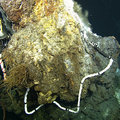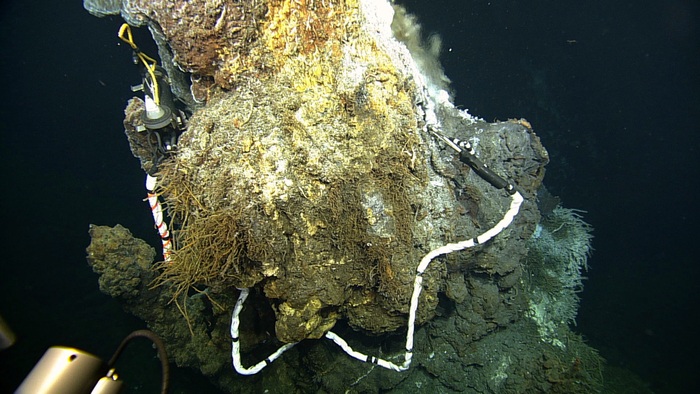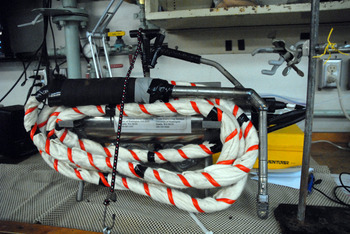Known as the "Res Probe," this novel seafloor instrument is designed to go inside the "throats" of high temperature (up to 480°C) black smoker chimneys to measure the resistivity and temperature of the hydrothermal vent fluids. Resistivity is an analogue for chlorinity, measuring the "saltiness" of the vent fluids. Many of the structures at Axial Volcano emit boiling fluids, as reflected by their high temperature and low chlorinity. They also have very low pH (~1.0), lower than battery acid, which makes long-term measurements very challenging.
The Res Probe was developed by Marv Lilley at the University of Washington. The cabled version of the Res Probe will be installed in 2014 at Escargot sulfide structure as part of the International District Hydrothermal Field (MJ03C), Axial Volcano, instrumentation.




